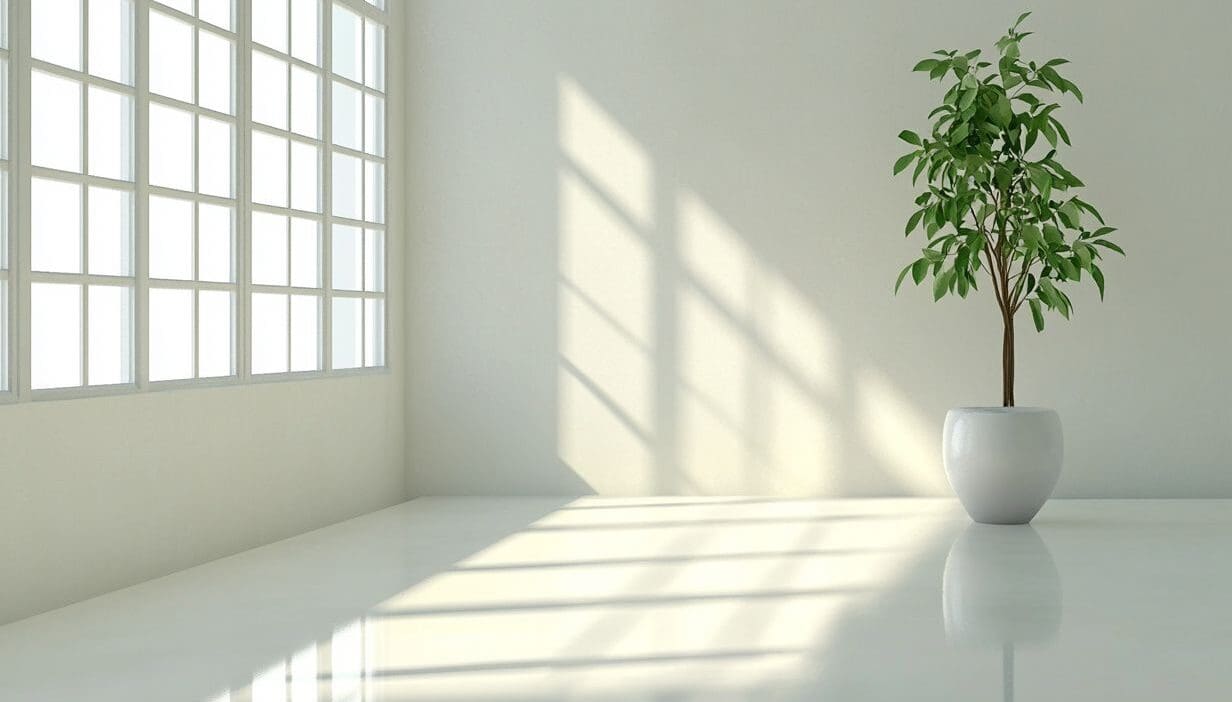In today’s fast-paced world, clutter in our physical environment can lead to mental disarray, adversely affecting our focus and overall well-being. This article examines the relationship between our living environment and our mental state. It highlights how a tidy space can enhance clarity and alleviate stress while providing practical steps for organizing one’s surroundings. The discussion will guide readers through the decluttering process. Additionally, readers will find tips on how to maintain their newly organized spaces and create a serene, functional environment that promotes productivity and peace of mind through mindfulness practices.
Key Takeaways:
The Connection Between Physical Space and Mental Clutter
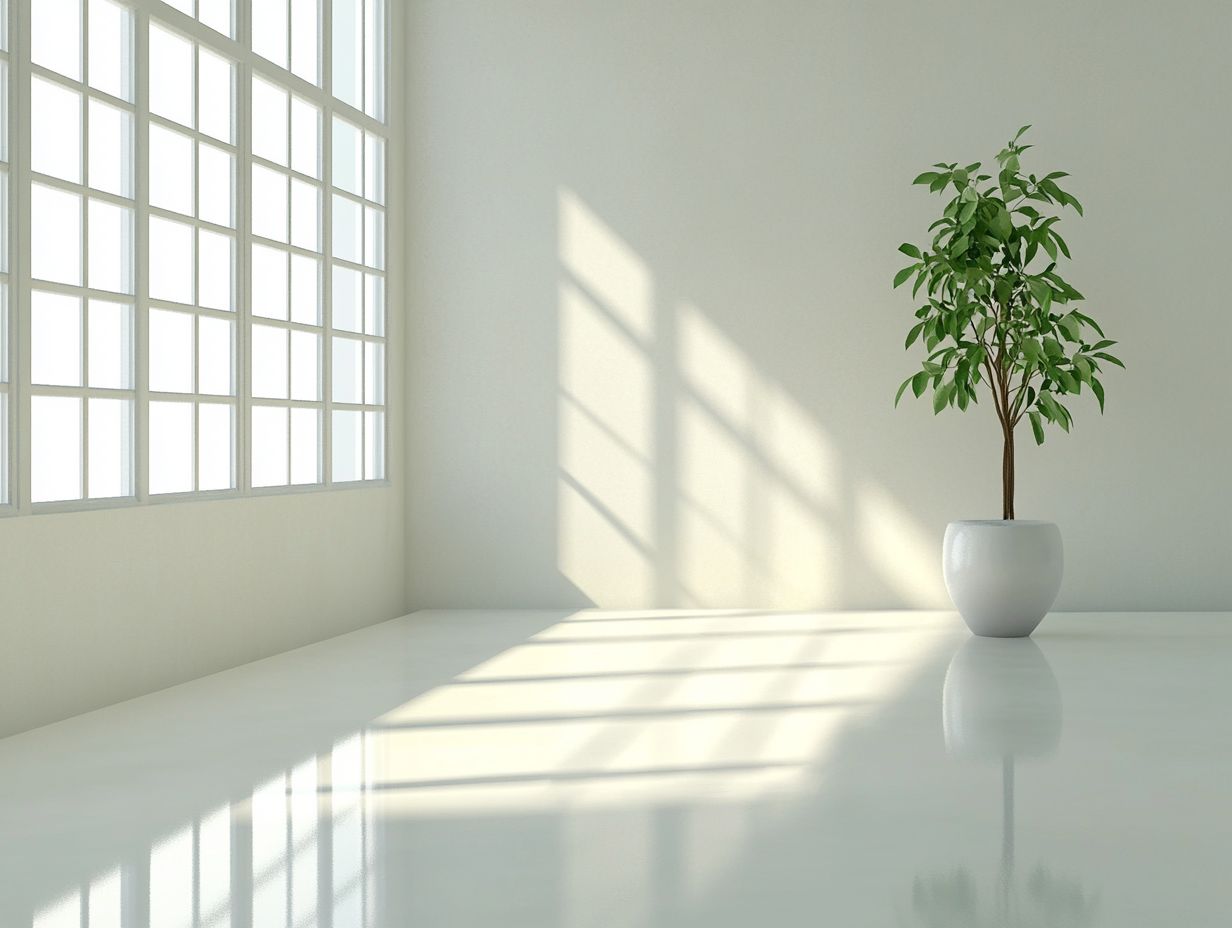
The relationship between physical space and mental clarity is significant, as external surroundings greatly impact one’s internal state of mind and help to clear mental clutter. According to Medium, the physical environment can profoundly affect mental productivity and overall well-being.
A disorganized physical environment frequently results in heightened distractions and stress levels, thereby hindering the ability to concentrate on objectives and communicate effectively.
By decluttering one’s surroundings, individuals not only establish a more orderly physical space but also promote emotional clarity and mental vitality.
This relationship underscores the importance of a tranquil environment, where moments of calming solitude can facilitate mindfulness and self-care practices, ultimately contributing to enhanced mental health outcomes.
Understanding the Relationship
Understanding the relationship between mental clutter and physical space is essential for achieving emotional clarity and effectively managing distractions.
When an individual’s mind is filled with incessant and often conflicting thoughts and feelings, it can result in an overwhelming sense of distraction, making it difficult to concentrate on the tasks at hand, which can often be alleviated through journaling daily. This mental chaos not only hinders productivity but can also negatively impact overall well-being, contributing to feelings of anxiety and stress.
To systematically organize thoughts and alleviate this mental turmoil, techniques such as mindfulness practices and journaling can be highly beneficial. Mindfulness encourages individuals to focus on the present moment, while journaling serves as an outlet for processing emotions. For an in-depth understanding of mindfulness practices, including their benefits and how to effectively incorporate them into daily life, Healthline provides a comprehensive overview in their article “What is Mindfulness: Benefits, How to Practice, and More”.
Both practices ultimately assist in removing distractions and fostering clarity within one’s mind, which contributes to better control over clutter.
Benefits of Decluttering Your Space
Decluttering one’s space provides several mental health benefits, including reduced stress and improved emotional clarity. This transformation enables individuals to feel more focused and organized in their daily activities.
By establishing a serene environment, individuals can enhance their mental energy and effectively prioritize tasks, resulting in a more streamlined and simplified life. This process not only facilitates the organization of physical belongings but also contributes to alleviating mental clutter, which can significantly improve mood and overall productivity.
Improved Mental Clarity and Productivity
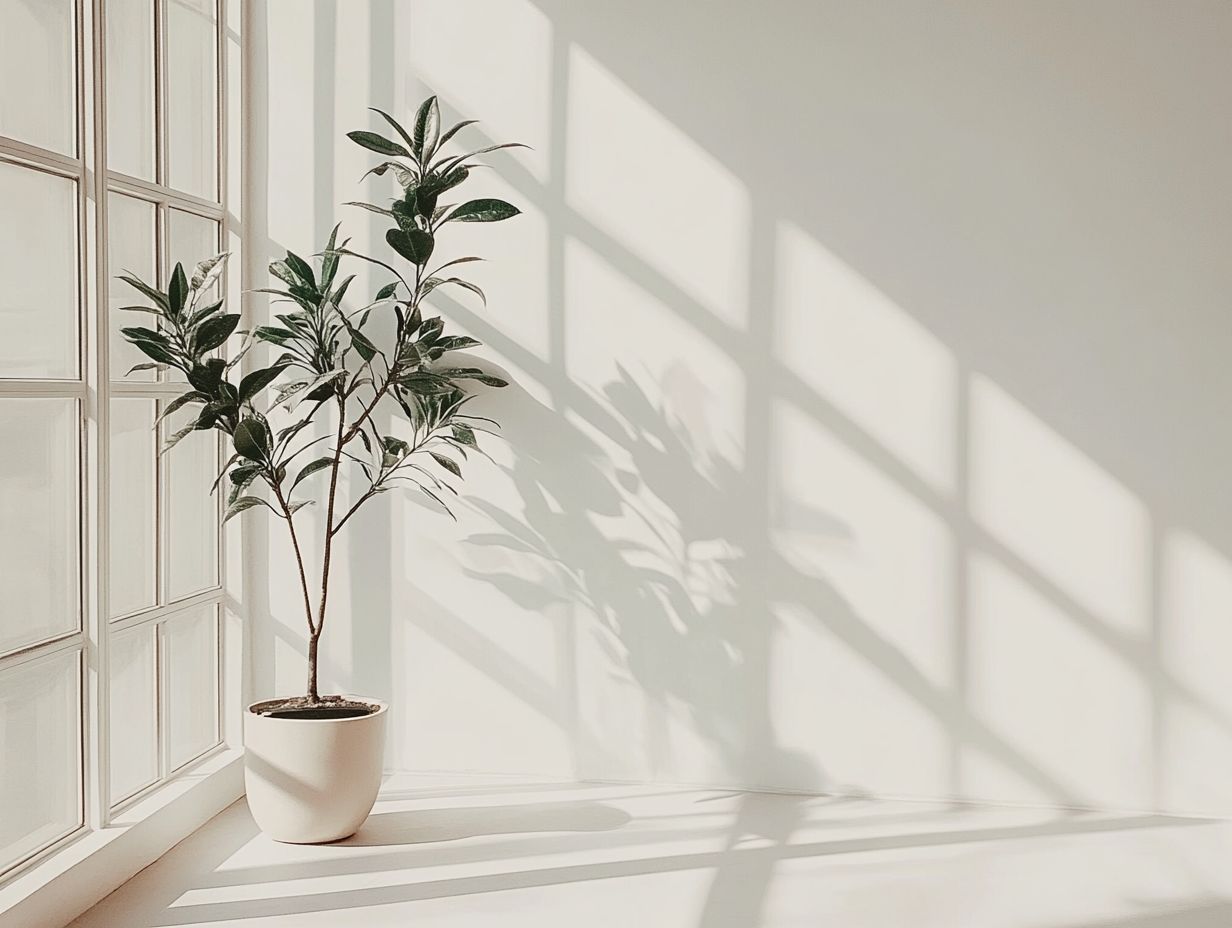
Improved mental clarity and productivity are among the primary benefits of decluttering one’s space, as a tidy environment facilitates enhanced focus on goals and tasks. In fact, Psychology Today highlights numerous mental benefits associated with this practice, supporting its positive impact on focus and cognitive performance.
By adopting a regular decluttering routine, individuals can foster an atmosphere that promotes enhanced cognitive performance and manage distractions effectively. This approach not only minimizes distractions but also enables individuals to concentrate more effectively on what truly matters.
To create an organized workspace, it is advisable to begin by categorizing items into essentials and non-essentials, which simplifies the prioritization of visible items. The implementation of storage solutions, such as desk organizers and labeled bins, can further enhance accessibility.
Ultimately, a clear and orderly environment supports improved focus and sustained productivity, thereby freeing up mental resources for creativity and problem-solving.
Reduced Stress and Anxiety
Decluttering one’s space can significantly alleviate stress and anxiety, fostering a tranquil environment that enhances emotional clarity and overall well-being.
By removing unnecessary items that clutter living areas, individuals can create an open and inviting atmosphere, which facilitates improved focus and tranquility. A clean environment gives power to the mind by instilling a sense of control and mastery, thereby counteracting the chaos often encountered in daily life and promoting positive impacts on mental health.
Implementing small, manageable strategies—such as organizing one room at a time, establishing specific decluttering goals, and donating unused items—can lead to a substantial mental detoxification. As the clutter decreases, feelings of overwhelm are diminished, resulting in enhanced mental health and a renewed sense of purpose.
Steps to Declutter Your Space
To effectively declutter one’s space, it is essential to adopt a structured approach that encompasses assessing the area, organizing thoughts, and establishing clear goals for task prioritization.
By implementing a systematic decluttering routine, individuals can methodically eliminate both mental and physical clutter, thereby creating an environment that promotes emotional clarity and enhances overall well-being.
Assessing Your Space and Setting Goals
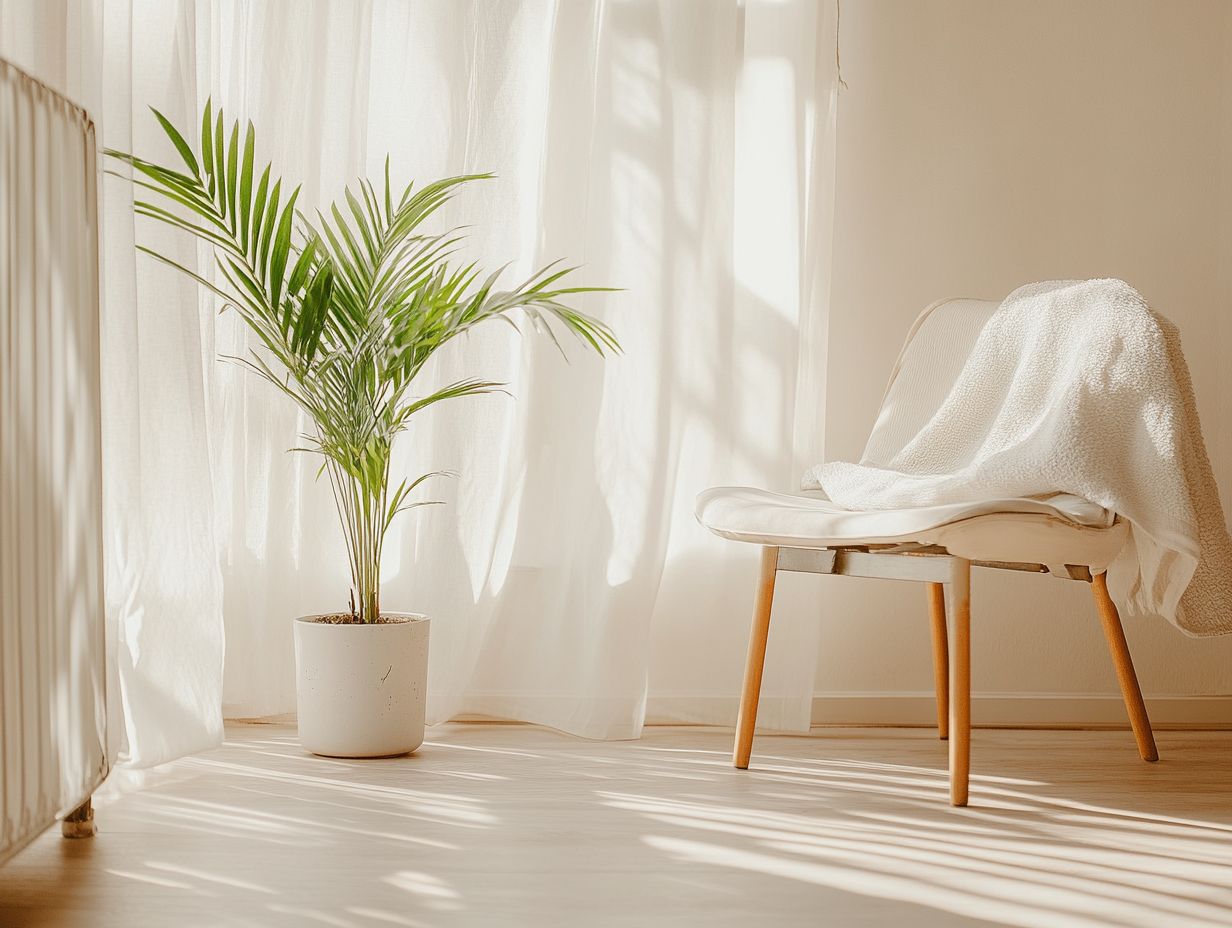
The initial step in the decluttering process involves assessing one’s space and establishing specific goals to organize thoughts and belongings effectively.
It is crucial to comprehend both the physical and mental dimensions of clutter for a comprehensive approach to decluttering. Physical clutter can overwhelm living spaces, resulting in stress, while mental clutter can impede clear thinking and decision-making.
To evaluate these aspects, individuals should consider walking through each room to identify items that no longer serve a purpose or bring joy.
In practical terms, creating a checklist can assist in determining which items to keep, donate, or discard. Furthermore, setting achievable, smaller goals—such as addressing one area at a time—can render the process less daunting and more manageable.
By implementing these strategies, individuals can cultivate a sense of accomplishment throughout their decluttering journey.
Sorting and Organizing Your Belongings
Sorting and organizing one’s belongings is a critical component of the decluttering process, as it fosters emotional clarity and facilitates the organization of thoughts. This method offers a practical means to evaluate what is genuinely significant while establishing a more serene and structured environment.
When undertaking this task, it is advisable to categorize items into distinct groups, such as those to keep, donate, or discard. It is important to assess items based on their utility and emotional significance, reflecting on whether they truly enhance one’s lifestyle or bring joy.
Establishing a timeline for this activity can also help maintain motivation, providing an organized framework that balances awareness with effective decision-making, which can be further supported by using mindfulness apps. Ultimately, attaining clarity in one’s physical space can lead to a corresponding clarity of mind and reduce anxiety.
Implementing a Maintenance Plan
Implementing a maintenance plan is crucial for sustaining an effective decluttering routine, thereby ensuring ongoing emotional clarity and minimizing mental clutter.
To manage clutter effectively, it is essential to schedule regular check-ins to reassess one’s space and belongings. This process can be as straightforward as dedicating a few minutes each week to evaluate items that are no longer needed or valued, thereby contributing to a mental detox.
Along with these assessments, establishing designated areas for frequently used items can enhance organization and improve accessibility.
Another practical approach is to adopt a ‘one in, one out’ policy, which promotes mindful consumption and helps to prevent unnecessary accumulation.
By integrating these practices into a routine, individuals can foster an environment conducive to clarity, ultimately creating a more serene and inspiring living space.
Additional Tips for Maintaining a Clutter-Free Space
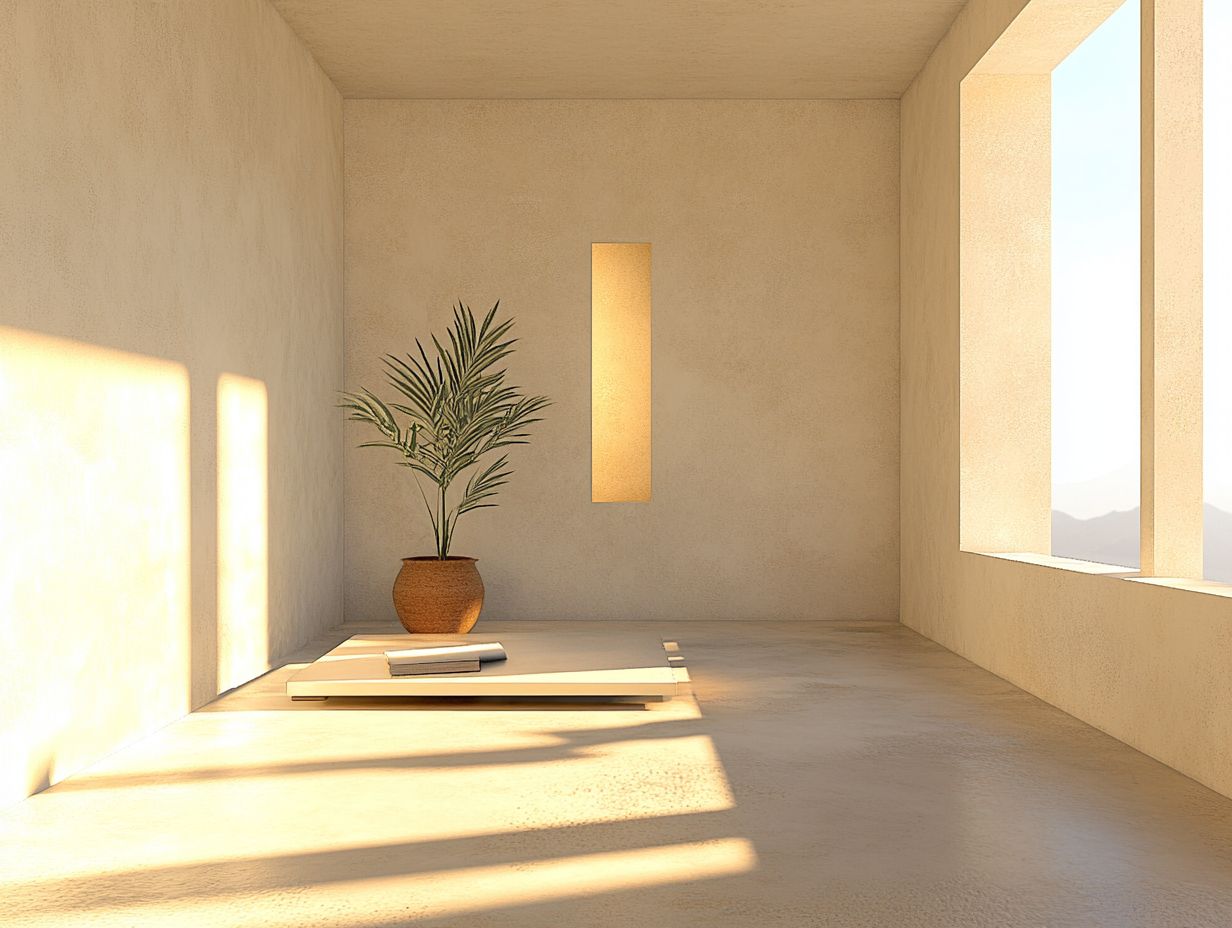
To achieve a clutter-free environment, it is advisable to incorporate minimalism and mindful consumption into one’s lifestyle. This approach fosters a more tranquil atmosphere that contributes to emotional well-being and personal growth.
Incorporating Minimalism and Mindful Consumption
Incorporating minimalism and mindful consumption practices can significantly enhance decluttering efforts, fostering emotional clarity and promoting a sense of peace within one’s environment.
By concentrating on what is truly essential and eliminating unnecessary distractions, individuals can cultivate serene spaces that support their mental well-being. Embracing minimalism encourages a lifestyle that prioritizes experiences over material possessions, facilitating more meaningful interactions and reducing overall stress levels, which can be enhanced by taking technology breaks.
To effectively adopt these principles, it is advisable to begin by evaluating personal belongings and determining whether they contribute value to one’s life, helping to declutter your mind.
- Establish a ‘one-in-one-out’ rule to maintain equilibrium, ensuring that for every new item acquired, an existing item is relinquished, helping to simplify life.
- Engage in mindful shopping by thoughtfully assessing whether a purchase aligns with your values and goals, which ultimately leads to a more intentional and fulfilling existence, fostering mindful living.
Creating a Peaceful and Functional Environment with Emotional Clarity
Creating a peaceful and functional environment is essential for enhancing emotional clarity and promoting a sense of calming solitude within both residential and professional spaces, making time to think and express yourself.
This tranquil ambiance can be achieved through meticulous organization, which minimizes distractions and facilitates a more focused mindset, allowing distractions removed for better focus. Incorporating soothing aesthetics, such as soft color palettes and natural materials, further contributes to a serene atmosphere, rendering any area more inviting, as highlighted by the Journal of Environmental Psychology.
Additionally, introducing personal elements, such as cherished photographs or live plants, fosters a connection to the space and enhances its calming influence, akin to the practice of solitude practiced in meditation techniques. Collectively, these key components work in harmony to cultivate a sanctuary that not only nurtures the spirit but also supports daily tasks with elegance and efficiency.
Seeking Support and Accountability with Marie Kondo’s Insight
Seeking support and accountability from others can significantly enhance the decluttering process, promoting emotional clarity and facilitating one’s journey toward mental detoxification, similar to the principles of the Bean Protocol.
By involving friends, family, or community groups in this endeavor, individuals can establish a robust network of encouragement and motivation, as noted by Harvard Medical School. Sharing decluttering objectives with others not only makes the task more enjoyable but also fosters a sense of responsibility, enabling a brain dump to declutter the mind.
When individuals are aware that others are invested in their progress, it can lead to increased commitment and perseverance, akin to the nature walks suggested by John Eldredge. This collective effort provides opportunities to celebrate small victories together, reinforcing the positive outcomes associated with creating a more organized and tranquil environment.
Engaging with like-minded individuals in such initiatives can elevate the overall experience and serve as a vital reminder that accountability plays an essential role in achieving sustainable change, with support from platforms like ClickUp.
